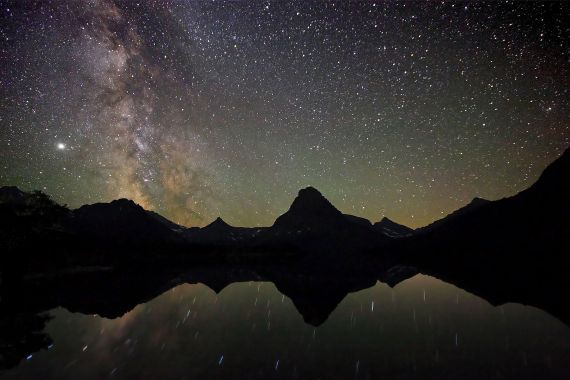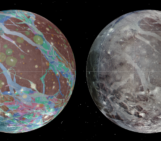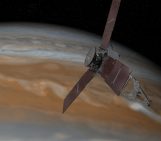This week’s Imaggeo on Mondays highlights an amazing view of the night sky at new moon. Christian Klepp took this photo while at Waterton Glacier in the Rocky Mountains – it’s an incredible feat of determination to spend the night beside a glacial lake in the Rockies, let alone to capture such a photo!

“Patterns in the void” by Christian Klepp. This image is distributed by the EGU under a Creative Commons licence. You can find out more about the image from the photographer.
The centre of the Milky Way lies just over the horizon, shrouded by clouds of interstellar dust. To the left of it is Jupiter – the brightest spot in the photo.
Jupiter orbits the sun at a distance of about 778 million kilometres (Earth is about 150 million kilometres away), taking twelve times longer than Earth to make the trip. Unlike our atmosphere, Jupiter’s is rich in hydrogen and helium – the elements that fuel our sun – and if this gas giant had been 80 times bigger, it would have been a star too – and would have been considerably brighter than it is in Klepp’s photo!
As it is though, Jupiter is ‘only’ a planet – it’s 1,321 times larger than Earth (by volume) and has over 60 more moons. It’s definitely impressive. For more about this great gaseous giant, see this short video – put together with footage from NASA and ESA:
http://www.youtube.com/watch?v=s56pxa9lpvo
Imaggeo is the EGU’s open access geosciences image repository. A new and improved Imaggeo site will be launching soon, so you will be able to peruse an even better database of visually stunning geoscience images. Photos uploaded to Imaggeo can be used by scientists, the press and the public provided the original author is credited. Photographers also retain full rights of use, as Imaggeo images are licensed and distributed by the EGU under a Creative Commons licence. You can submit your photos here.




